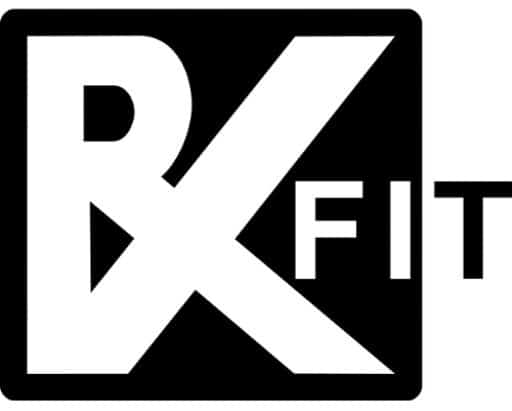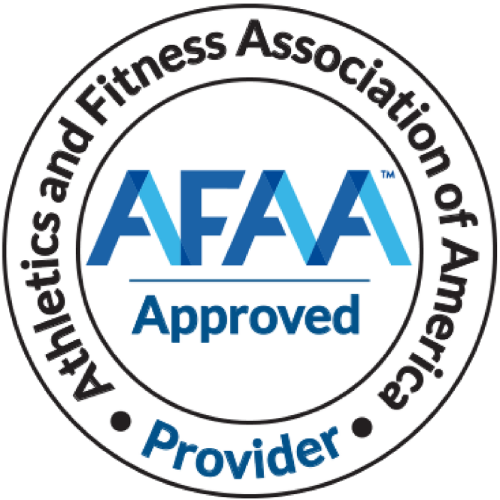The human body is a marvel of engineering, a complex and intricate network of bones and joints that allow us to perform a wide range of activities. Among these intricate mechanisms, our knees play a pivotal role, bearing the weight of our bodies and enabling us to walk, run, and jump.
But what happens when this miraculous system starts to falter?
Can we figure out how to fix knee valgus?
In this guide, we at Rx-Fit will help you explore the condition of knee valgus, otherwise known as knock knees, where the knees shift inward, affecting joint health. Essentially, knee valgus is a condition in which the knee joint collapses inward when weight is applied to it. This means that the knees deviate towards each other, forming an X-shape when standing.
Figuring out how to fix knee valgus is crucial for preventing pain and injuries, making this guide an essential resource for understanding knee mechanics and solving this common issue.
Causes of Knee Valgus
According to Physiopedia, knee valgus is an intriguing case with multiple causes. Rx-Fit is about to explore a few as well as the role each plays in this condition. That way we can help you figure out how to fix knee valgus.
Genetics and Structural Factors
Imagine you’re handed a blueprint at birth that outlines the structure of your body. Research shows that some individuals are genetically predisposed to knee valgus due to the way their bodies are built. Though it is something that is usually outgrown by the age of 7 naturally or with proper management, this allows it to be classified as “hereditary”.
Muscle Imbalances
When certain muscle groups are stronger or more active than others, they can exert uneven forces on the knee joint. This internal tug of war can cause the knees to deviate inward, creating the classic knee valgus shape. In some instances overactive hip adduction and weak hip abductors engage in a relentless struggle, pulling your knees closer together with each step.
Joint Injuries and Trauma
Past accidents or sports-related injuries can alter the knee’s structure and mechanics. Scar tissue, weakened ligaments, or damage to the joint can disrupt the delicate balance and push your knees into a valgus position. But how to fix knee valgus? As time passes, the repercussions of these injuries can become increasingly apparent, turning what initially seemed like a minor issue into a major point of discomfort.
Understanding the Impact on Joint Health
Dynamic knee valgus places excessive stress on the knee joint, leading to uneven wear and tear. Over time, this injury can result in chronic pain, instability, and a heightened risk of injuries, such as ligament tears or cartilage damage.
The misalignment of your knees disrupts your body’s natural weight distribution, weakening the joint’s support structure. When the knees cave, the result is a deteriorating situation that can compromise your ability to lead an active and pain-free life.
Identifying Knee Valgus
Beneath the surface of our skin and muscles, this elusive condition lies waiting. But how can we identify knee valgus so that we can then find how to fix knee valgus?
Visual Signs and Symptoms
When you stand, do your knees seem to kiss each other or knock together? That’s a visual hint that knee valgus might be lurking. You might also notice your feet turning outward as your knees deviate inward, creating an unnatural alignment or flat feet.
As you move, pay attention to your gait. Do you feel like your knees are collapsing inward when you walk or run? If you experience discomfort, pain, or instability in your knees, these are additional signs that knee valgus may be the culprit.
Diagnostic Techniques
One crucial technique is gait analysis, where experts study your walking or running patterns to detect any irregularities, such as inward knee deviation. Imaging techniques like X-rays or MRIs can provide an inside look at your knee joint’s structure, revealing any anatomical abnormalities.
These diagnostic tools offer insight into the nature and severity of knee valgus.
Seeking Professional Guidance
Once you’ve spotted the signs and understood the impact on joint health, the next logical step is to consult a medical professional. Orthopedic specialists, physical therapists, or sports medicine professionals can provide a detailed assessment and personalized treatment options tailored to your unique situation.
They possess the knowledge and tools to guide you through the process of solving knee valgus. Their expertise is the key to uncovering the solution and restoring your knee health.
The importance of addressing dynamic knee valgus promptly cannot be overstated. The longer you wait, the more complicated the issue can become and the less room we have to figure out how to fix knee valgus. Timely intervention can prevent the condition from worsening, alleviate discomfort, and reduce the risk of more severe joint issues.
Physical Therapy Techniques
The road to recovery from knee valgus is equipped with a range of techniques that will lead you toward strength, stability, and alignment. This is just the start of how to fix valgus knee, now let’s explore the key techniques used by Rx-Fit experts to help fix knee valgus.
Range of Motion Exercises
Range of motion (ROM) exercises are an integral part of knee valgus rehabilitation. These exercises aim to improve the flexibility and mobility of the knee joint. Here’s how to fix valgus knee using this method:
- Active Range of Motion (AROM): AROM exercises involve voluntary movements of the knee joint without external assistance. Common AROM exercises for knee valgus include knee flexion and extension movements, leg lifts, and seated knee circles. These exercises aim to restore the normal range of motion by engaging the muscles surrounding the knee joint.
- Passive Range of Motion (PROM): PROM exercises are typically performed with the assistance of a physical therapist or a device. The therapist or the device guides the knee through its range of motion. This is particularly useful in the early stages of rehabilitation when patients may have limited mobility. PROM helps prevent joint stiffness and maintains joint flexibility.
- Dynamic Stretching: Dynamic stretching exercises involve controlled, repetitive movements that take the knee joint through a full range of motion. Examples of how to fix ‘valgus knee’ include leg swings, walking lunges, and high knees. Dynamic stretching can be incorporated into warm-up routines and is beneficial for improving flexibility and preparing the knee for activity.
- Static Stretching: Static stretching involves holding a stretch at the end of the range of motion for some time. You can incorporate a resistance band. Common static stretches for knee valgus target the quadriceps, hamstrings, and calf muscles. Here are a few of the best stretches you can do at home. These stretches help improve muscle flexibility and joint mobility.
Proprioception Training
Proprioception refers to the body’s ability to sense and control its position in space. It is crucial for maintaining balance, stability, and proper joint alignment. Here is how to fix valgus knee by including these types of training.
- Balance Exercises: Balance training can include activities like single-leg standing, wobble board exercises, and stability ball exercises. These exercises challenge the patient’s ability to maintain balance, which is crucial for knee joint stability and alignment and to manage knee pain.
- Neuromuscular Reeducation: This involves specific exercises and movements designed to enhance the communication between the nervous system and the muscles responsible for knee stability. Patients might perform tasks that require precise muscle control to improve proprioception and joint alignment.
- Plyometric Training: Plyometric exercises, such as jumping and landing drills, can help improve dynamic stability and neuromuscular control. These exercises simulate the demands of sports and daily activities, reducing the risk of valgus knees collapsing during high-impact movements.
- Functional Training: Proprioception training often includes functional movements that mimic activities of daily living or sports. For example, lateral stepping, cutting, and change of direction drills can help improve dynamic knee stability and alignment.
Myofascial Release for Alignment
Myofascial release is a technique used by physical therapists to address soft tissue restrictions and muscle imbalances that may contribute to knee valgus. Here’s how to fit fitness into your schedule. This type of training includes:
- Soft Tissue Mobilization: Physical therapists may use their hands or tools like foam rollers or massage sticks to apply pressure to soft tissues around the knee, including the quadriceps, hamstrings, and iliotibial band. This technique helps release muscle tightness and fascial restrictions that may contribute to poor knee alignment.
- Trigger Point Release: Trigger points are localized knots or tight bands in muscles that can refer pain to other areas. Therapists may use techniques like trigger point release to address specific muscle imbalances and alignment issues associated with knee valgus.
- Deep Tissue Massage: Deep tissue massage techniques target the deeper layers of muscle tissue to alleviate tension and improve blood flow. This can be particularly beneficial for addressing muscle imbalances that impact knee alignment.
- Active Release Techniques (ART): ART is a hands-on approach that combines movement with manipulation to break up adhesions and scar tissue in muscles and fascia. ART can help improve muscle function and alignment around the knee joint.
Strength Training Protocols
Strength training is critical for the rehabilitation of your knee valgus. By addressing muscular imbalances and improving overall strength, you can enhance knee stability and alignment. Here are specific strength training protocols for knee valgus:
Building Core Stability
Core stability is essential for maintaining proper body alignment, which in turn helps reduce the risk of knee valgus during various movements. It’s important to ease into an exercise program, however, these are a few techniques you can incorporate to build core stability:
- Planks: Planks are excellent for developing core stability. Start with a basic plank by holding your body in a straight line from head to heels while supporting yourself on your elbows and toes. Progress to side planks for improved lateral stability.
- Dead Bugs: This exercise targets the deep core muscles. Lie on your back with arms and legs extended toward the ceiling. Lower one arm and the opposite leg toward the ground while keeping your lower back in contact with the floor. Return to the starting position and alternate sides.
- Russian Twists: Sit on the floor with your knees bent and your feet off the ground. Hold a weight or medicine ball and rotate your torso to each side, engaging your obliques. This exercise challenges rotational core stability and directly interacts with valgus knees.
- Bird Dogs: Get on your hands and knees. Extend one arm and the opposite leg while keeping your core engaged. This exercise improves balance, coordination, and core strength.
Isolated Glute Activation
Strengthening the glute muscles, especially the gluteus medius, can help provide better support to the hip and knee joints when the knees cave, reducing the risk of knee valgus. This can be accomplished using:
- Clamshells: Lie on your side with your knees bent at a 90-degree angle. Keeping your feet together, lift the top knee as high as you can while maintaining contact between your feet. This exercise targets the gluteus medius, which is crucial for hip stability and knee alignment.
- Monster Walks: Place a resistance band just above your knees. Take small steps forward, backward, or sideways while maintaining tension on the band. This exercise targets the gluteus medius and helps improve hip stability.
- Glute Bridges: Lie on your back with your knees bent and feet flat on the floor. Lift your hips off the ground by squeezing your glutes engaging your core and focusing on your hip’s internal rotation. This exercise strengthens the glutes and hamstrings.
- Single-Leg Glute Bridges: Similar to the glute bridge, but performed with one leg extended. This exercise further isolates the glutes and challenges single-leg stability.
Progressive Loading for Ligament Support
Progressive loading can help strengthen the muscles and ligaments around the knee joint, providing greater support and stability. Here are a few ways this can be achieved:
- Squats: Squats can be an effective way to load the knee joint and surrounding ligaments when performed with proper form. Start with bodyweight squats and gradually add resistance with weights. Focus on maintaining correct knee alignment and hip internal rotation throughout the movement.
- Lunges: Lunges also provide progressive loading for the knee and hip joints. You may use a resistance band to ensure that your front knee remains aligned with your foot and your back knee hovers just above the ground.
- Step-Ups: Using a bench or step, step up and down while maintaining good knee alignment. You can add weights to increase the resistance. You should make sure that your hips are also in the correct position to make sure you have good form.
- Leg Press: Leg press machines at the gym can be used to progressively load the leg muscles while controlling knee movement and alignment. Start with light weights and increase as you get stronger.
Please note that it is crucial to have the correct form and work with a physical therapist, qualified fitness professional, or personal trainer. This is to ensure that these exercises are performed correctly and safely. Poor form can exacerbate knee valgus issues, and knee pain or lead to other injuries.
Contact An Rx-Fit Personal Trainer For A Free Assessment Today!
The Role of Footwear
Footwear plays a crucial role in managing knee valgus by influencing alignment and stability in the lower extremities. Selecting supportive shoes with arch support, cushioning, and proper width can help reduce stress on the knee joint. Here are signs that you’re wearing the wrong shoes! Consulting with a healthcare professional can help in determining the best footwear and orthotic options.
Custom or over-the-counter orthotic insoles can provide individualized support and alignment correction. Heel height in shoes is also significant for movement; flat and low-heeled shoes are generally better for knee valgus, while high heels can exacerbate the condition and cause further injury.
Nutritional Strategies for Joint Health
Corrective exercises alone won’t be enough. Nutrition for joint health is essential for maintaining pain-free and flexible joints. It’s important to consult with a healthcare provider or registered dietitian to create a personalized nutrition plan that suits your specific needs and health conditions. However here are a few strategies Rx-Fit suggests for better joint health:
Anti-Inflammatory Diet
An anti-inflammatory diet helps to reduce inflammation. Focus on consuming fruits, vegetables, omega-3 fatty acids, spices, whole grains, lean proteins, and healthy fats to reduce inflammation and support joint health.
Hydration and Its Impact on Joint Lubrication
Proper hydration lubricates joints, preventing friction and wear and tear. Adequate hydration, maintaining electrolyte balance, and avoiding excessive sugar and caffeine intake are essential for joint lubrication and overall joint function.
Lifestyle Adjustments
Lifestyle adjustments can help you maintain movement or improve your joint health. It’s essential to be proactive and make these changes a part of your daily routine. This reduces the risk of joint problems and enhances your overall quality of life. You can start with a 5-minute workout and then work your way up from there.
Ergonomics and Posture Awareness
Proper workspace setup and mindful posture can reduce strain on joints, especially the spine. Whether at a desk or in a home office, ensure your workspace is ergonomically designed. This includes having an adjustable chair, a desk at the appropriate height, and good lumbar support. Proper ergonomics can reduce the strain on your joints, especially the spine, and prevent postural issues.
Impact of Sedentary Habits
Regular breaks, exercise, and weight management are vital to prevent joint stiffness and pain caused by prolonged sitting. Prolonged sitting can contribute to joint stiffness and discomfort. Taking short breaks, engaging in regular physical activity, and maintaining a healthy weight through a balanced diet and exercise can help reduce the risk of joint problems and alleviate existing joint pain.
Incorporating Regular Movement
Staying active, strength training, flexibility exercises, and mindful movement routines are essential for maintaining joint mobility and overall joint health. It’s important to focus on exercises that target the weak muscles around your joints, such as squats, lunges, and leg lifts for knee and hip health.
Mind-body practices like tai chi and qigong can improve balance, coordination, and joint awareness while reducing the risk of falls and injuries. Making these adjustments part of your daily routine can help reduce the risk of joint problems and improve your quality of life.
Summary of Key Takeaways
From physical therapy techniques that build strength and alignment, to nutritional strategies that nourish our joints, and lifestyle adjustments these are ways to combat knee valgus. Consistency is key to the success of these interventions. It’s essential to make healthy choices and lifestyle adjustments part of your daily routine to see long-term benefits for joint health and to strengthen your weak knee valgus.
Taking control of your joint health and movement can be a daunting task. You will need to be very proactive in your choices and seek professional guidance when needed. Rx-Fit can help you identify and manage the effects of knee valgus. This is not something you have to tackle alone especially if you want to minimize further injury.
Connect With A Personal Trainer to Help With Knee Valgus Today!


